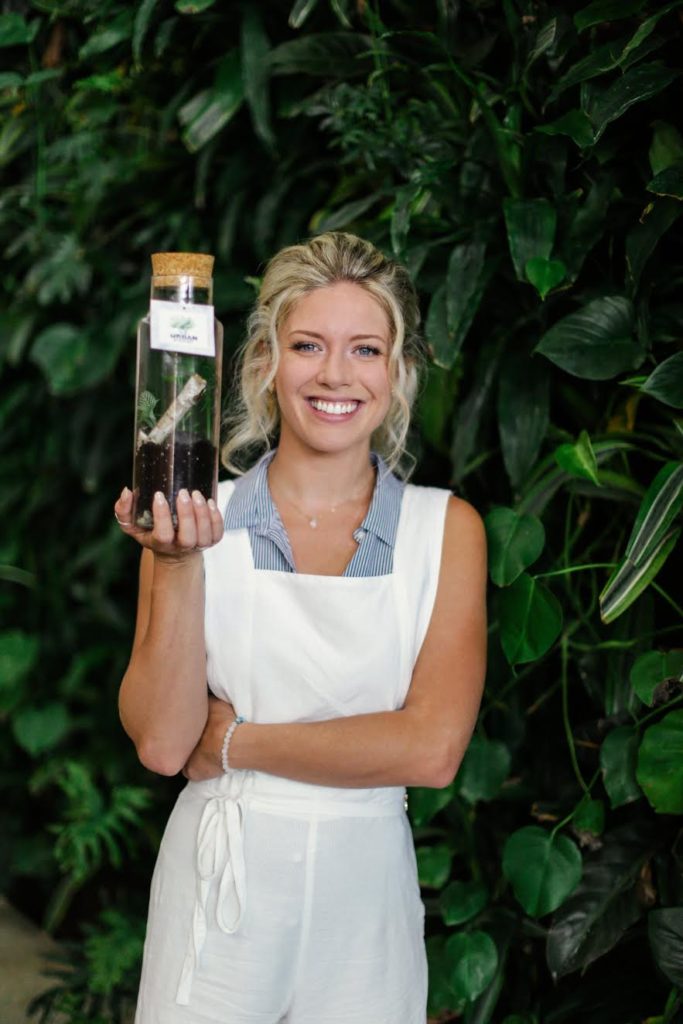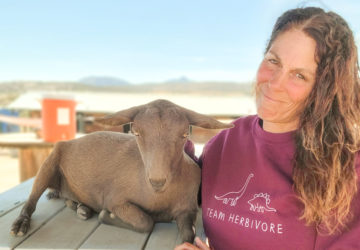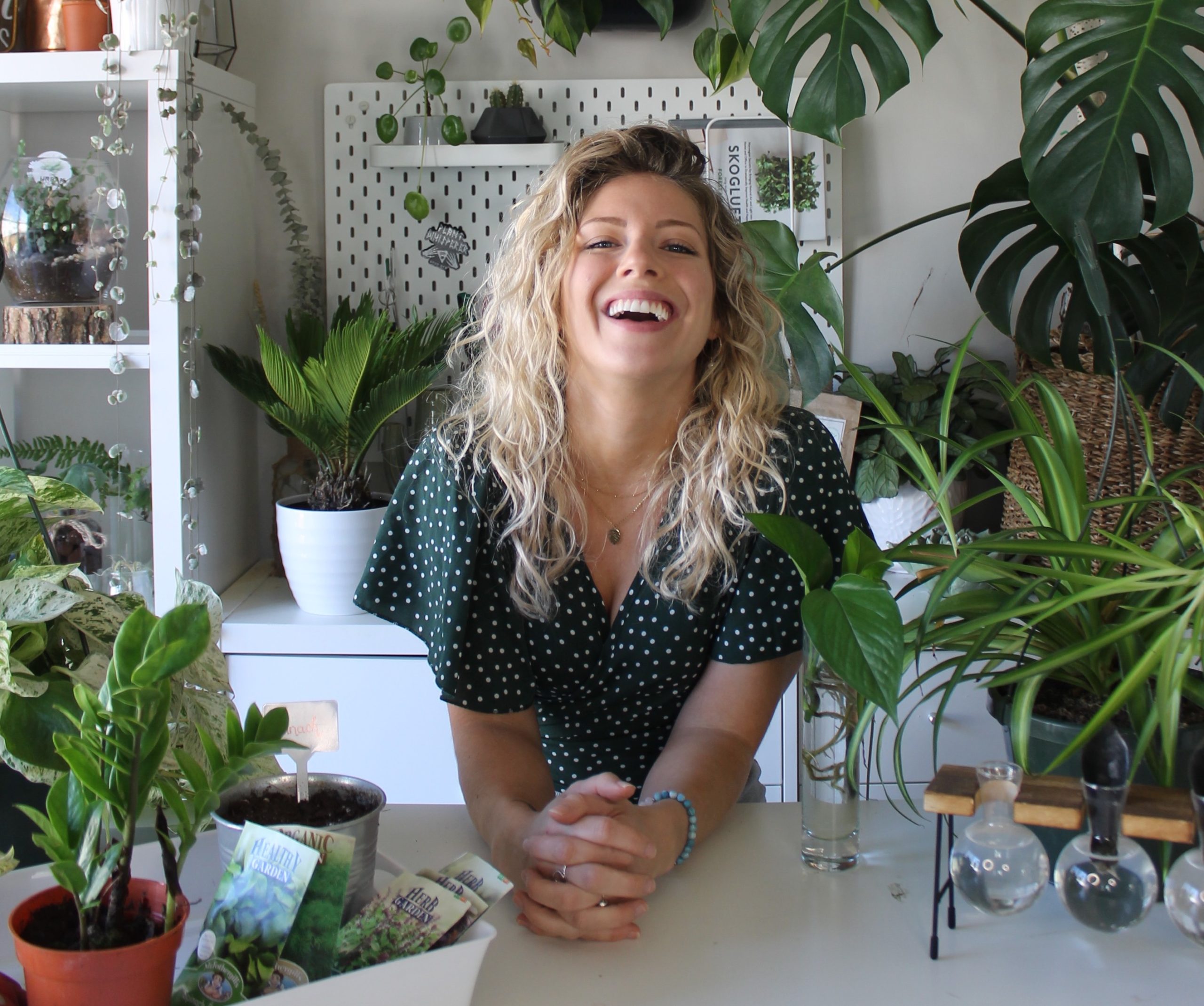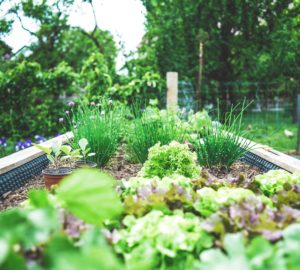How to be the best plant parent ever: Emma from The Urban Botanist shares her secrets
We’ve all been there: we spot a cute plant at a hardware store, we take it home in a colorful pot, and before we know it, we’re staring at wilted leaves or yellowy brown spots that make us never want to name a plant again! No fun. But if you ask Emma Terrell, the owner and founder of The Urban Botanist, making our little green friends happy as a plant parent doesn’t require luck or lots of money — it simply requires the right education.
“I’m a huge believer that black thumbs do not exist,” Emma told us. “Everyone has the ability to grow anything. You just need the right tools and the right information — then, you’re set.”
Now, Emma is on a mission to make plant parenthood accessible — and fun! — for everyone, while showing how caring for plants is a way to care for ourselves. She does everything from hosting plant workshops, to creating vertical green walls, to building DIY terrarium kits. We chatted with Emma about how her business works, her love of plants, and common plant parent mistakes. P.S. You’ll be shocked to find out how many plants she has in her home!
How to be the best plant parent ever: Emma from The Urban Botanist shares her secrets
Have you always been a plant-lover?
Emma: I have always been a plant lover, nature lover, and maybe when I was younger — more of a nature weirdo! I’m fascinated by the environment’s ecosystems. And I love exploring their natural histories while learning more about the biomechanics behind how plants and animals interact with each other.
View this post on InstagramA post shared by The Urban Botanist (@theurbanbotanist) on
Why do you think it’s important to have a relationship with plants?
Emma: Nowadays, our society is so geared towards technology that’s constantly pulling our attention. Our brains aren’t wired to manage that much constant pull. People feel so starved for that connection with nature. Another week happens, another month happens and we’re getting headaches and we’re exhausted. We’re lacking nature!
I find that practicing mindfulness through horticulture is a great way to become calmer, increase productivity and creativity, and build that innate necessity to be close to nature.
Plus, there’s something about having a renewed sense of purpose through horticulture. It’s very rewarding to care for another living organism and watch your influence help it grow and flourish.
Tell us about your business, The Urban Botanist?
Emma: About four years ago, the idea came to me to encourage people to engage with nature in an urban environment centered around this idea of caring for yourself while caring for plants. Our mission at The Urban Botanist is to reintroduce nature into people’s lives and to bring in mindfulness + happiness.
I came up with the name, designed the logo, and started using my platform as an opportunity to teach more people about plants and ecosystems.
How did you get started? What was one of the first steps you took?
Emma: Just for fun, I started building terrariums, which are snapshots of an ecosystem captured inside glass vessels. More and more people wanted to buy them and learn more about them. From there, I started building this idea of being an urban botanist and discovering what that really meant.
But looking back on my early twenties I’d say, “I’m going to start and run my own business.” The guys I was dating and my friends would ask, “Ok, what’s it going to be?” And I’d say “I don’t know but I know that I will.” I think that’s manifestation in itself!
What do you love about terrariums?
Emma: The limitless opportunities in ways you can create with them! There are so many different shapes of glasses and plants you can use, and there are so many ways you can design the landscape. And it’s so cool to harness nature inside a glass vessel and enjoy it inside.

It all comes back to engaging with nature within your home and seeing that little terrarium — noticing new growth and recognizing how your care for this little ecosystem is helping it maintain its sustainable way of life.
What’s a typical day in the life of The Urban Botanist?
Emma: I have 300-ish plants in my home! Taking care of that many plants has become part of my daily routine and it has completely changed my lifestyle. I’m watering, pruning, lifting the leaves to check for pests, singing to them, and talking to them. It’s so therapeutic. And while I check in on them, they check in on me in a few ways. 🙂
But currently, my day-to-day also involves checking in on my praying mantis egg sacks. They’re amazingly beneficial insects for your gardens outside. So they’ll eat the bad bugs, which is a great alternative to using pesticides.
What are plants you recommend for new plant parents?
Emma: The top two plants I like to recommend for people who are new to plants:
- Snake plants (Sansevierias)
- ZZ plants (Zanzibar gems)
They’re extremely resilient and also some of the best plants for detoxifying the air in your homes, which is another amazing thing about plants!
Are there any misconceptions when it comes to being a plant parent?
Emma: I think there’s a lot of misinformation about succulents and cacti. They’ve become so popular, which makes sense they’re beautiful and adorable, I love them as well. But what the issue is, people want to water them every single day because they want to be the best plant mom and plant dad. But there aren’t many plants you want to water every single day.
Most people kill their plants not because they forget to water them, but because they water them too much.
For succulents, generally, you need to water them once a month — maybe! You really should only be watering when the soil is dry. My rule of thumb is, if the top two inches of the soil are dry, you can water — but if it’s not, then leave it.
Do you have a favorite plant?
Emma: Calathea is my favorite — well, one of my favorites! They’re gorgeous, but I’d be one of the few people to say they’re my favorite because they’re so finicky. They love high humidity, they can’t be in direct sunlight, and they like more moist soil. They can be a pain, so if you can maintain it — it’s that much more rewarding.
What are some places that have inspired you as a plant-lover?
Emma: Madagascar and Singapore! But I’ve been to 64 countries and I’ve been all over Southeast Asia — everywhere from Vietnam to Cambodia. I try to go to places where I can enjoy the wildlife.
What are your goals for The Urban Botanist?
Emma: One of my big goals is to not only get plants into every household, but also get the right plants into everyone’s household with a monthly plant box subscription. With the subscription, you’d fill in your details such as if you have cats or not a lot of sunlight — and we’d find plants that’ll work for your space. And then, we’d deliver them to you.
Learn more about Emma’s work at The Urban Botanist and follow @theurbanbotanist for virtual workshops, DIY workshop kits, and pretty plant pictures.
For more plant parent inspiration, we think you’d love these posts:
- How to regrow vegetables from your home
- The ultimate pet-friendly guide to plant ownership
- Channel your inner green thumb: how to grow a home garden









